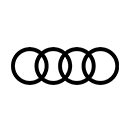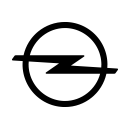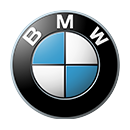What is VIN number?
VIN is an acronym often used for Vehicle Identification Number.
It's unique for every vehicle, just like DNA is unique for every human. VIN allows cataloguing vehicle by the universal scheme for all entities on the market.
On its basis, autoDNA can help you discover the vehicle history of your car, motorcycle, and even a trailer.
Manufacturers, in accordance with the International Organization for Standardization (ISO) standard norms, designate their vehicles with VIN numbers and place them (usually) in specific spots on the bodywork. However, it has not always been like this.
History of the bodywork number
VIN number was first introduced in 1954 in USA. During the first years after its introduction, until 1981, there wasn’t one unified standard for VIN numbers (bodywork numbers), and vehicle manufacturers would use various forms of information encoding. This was considered not to be working well, considering the growing number of vehicles, and therefore it was decided to regulate it and adjust the VIN designation to the global ISO norms.
After the introduction of the ISO norm, the manufacturers which produced vehicles for the American market very quickly adjusted to this standard. The ISO introduced recommendations for applying the VIN standard and its structure, and the bodywork number was also used in Europe. However, the sets of information contained in it were introduced gradually.
For example, Volkswagen started to encode bigger chunks of information during 1995-1997, and the control digit during 2009-2015 for selected models from the group. The VIN control digit is also used, although not in all brand-models. In the European vehicles, it can be found e.g. in Audi A1.
Below we list brands and models along with their VIN numbers for whose control digit is encoded:
As of July 6, 2022, an implementing regulation of the European Union Commission is in force, stipulating that for North American vehicles, the check digit is to be always on the 9th position of the VIN.
The VIN number standardization
The commonly used global vehicle identification standard was introduced in 1981, and it is commonly known and standardized by the ISO 3779 (content and structure of the VIN number), ISO 4030 (location and marking of the VIN number), ISO 3780 (global unification of the first section of VIN, which is WMI).
Every VIN number should:
consist of 17 characters
However, this standard applies to the vehicles manufactured since 1981.
should not consist of the following letters: I (i), O (o), and Q (q)
The standard is to use a scored-through 0 to differentiate it from the O letter.
consist of information arranged according to a standardised scheme
What information does VIN number contain?
The VIN number contains a range of encoded information. On the basis of this number, autoDNA is able to thoroughly identify the vehicle and check the vehicle history. Checking the VIN is basically checking the manufacturer code, the vehicle technical data, and its serial number, as well as verifying its number. Every VIN is divided into three basic sections.
Sections
In accordance with the ISO 3779 norm, the standard VIN numbers consist of 3 sections:
WMI
WMI, first three characters. This section defines the geographical region, country of origin and the vehicle manufacturer. The form of this section is regulated by the ISO norm.
VDS
VDS, 4th-9th characters of the VIN number. This section contains encoded data concerning the technical specification of the vehicle (vehicle descriptor). The 9th character is the check digit, used for validating the correctness of a VIN number.
VIS
VIS, 10th-17th characters of the VIN number. This section is basically the serial number of a vehicle (vehicle identifier). This section may contain information about the drive type, engine type, equipment version, and even the factory where a particular copy was assembled.
The ISO 3779 norm defines and specifies the 17-character length of the VIN number for vehicles manufactured after 1981. The vehicles manufactured before this date might have a VIN number or a serial number consisting of 5-13 characters. Moreover, vehicles such as muscle cars, classic cars and American cars often have VIN number which deviate from the 17-character standard.
Now that you know what the VIN number is, contact us to identify your vehicle. autoDNA will help you get information about the vehicle history which might be not available in other databases.
Every character in the VIN number has a meaning and it hasn’t been used accidentally.
Check the vehicle historyMeaning
Let’s take a look at the components of the 17-character VIN number
1
manufacturer designation
2-3
brand and vehicle type designations
4-8
model, bodywork, engine and equipment
9
check digit validating the correctness of
10
production year designation
11
factory designation
12-17
vehicle serial number
Where to find the VIN number?
By default, in Poland, the VIN number is placed in the “E” field in the vehicle registration book. It might be different for the vehicle registration books of other countries, such as Germany, the Netherlands, Belgium, Italy, France and Denmark.
It should always be consistent with the VIN number embossed on the statutory plate, which can be found in various spots of the vehicle. This field in your vehicle registration book must never be empty, as providing the VIN number is necessary to register the vehicle.
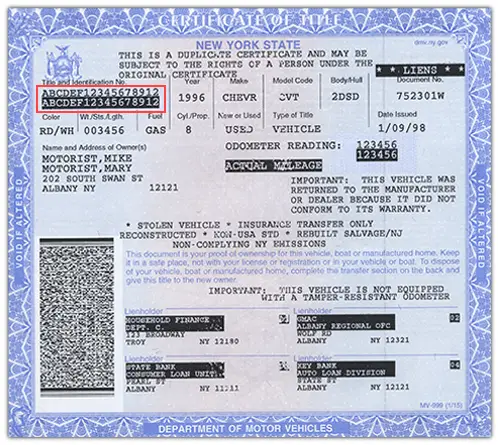
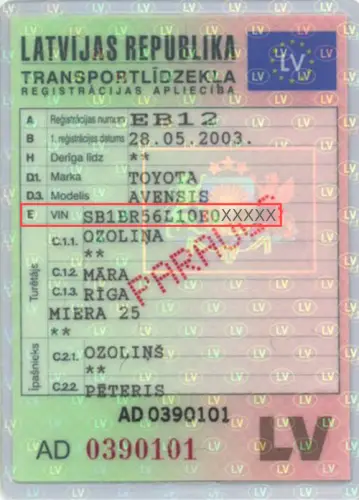
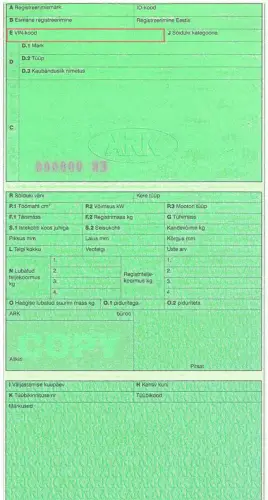
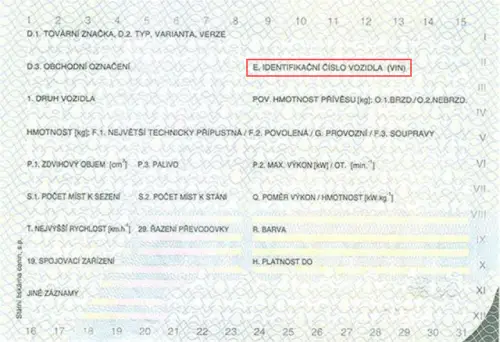
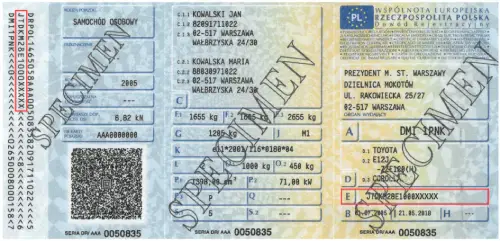
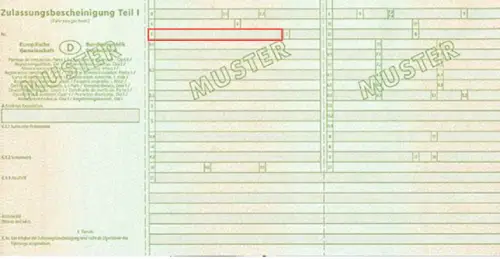
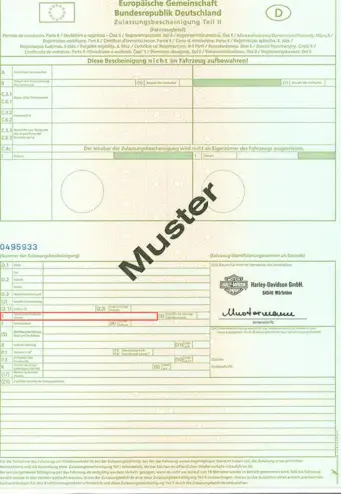
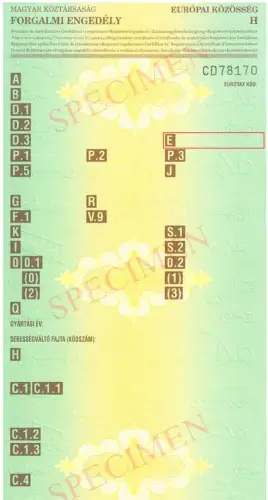
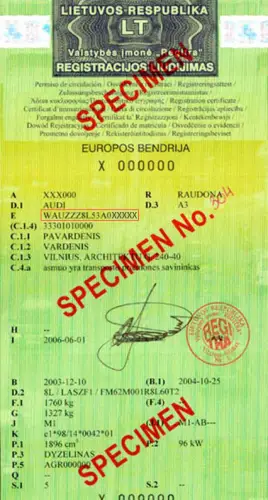
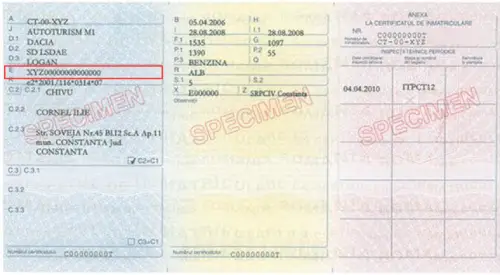
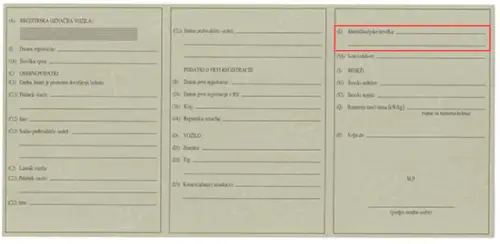
Important - check, whether the VIN number in the vehicle registration book is the same as the VIN embossed on the statutory plate of your vehicle.
In passenger vehicles
VIN is embossed on the frame or a fixed part of the vehicle.. Nowadays, in many car models the bodywork number is also placed on the lower part of the windscreen, on the driver’s side. It’s a very useful location, which makes a quick access to this important element of every car.
Here, we have listed only the most popular spots in which the statutory plates can be found. In cars of various manufacturers they can be found in other places, such as on the trunk floor plate, or on one of the rear pillars. In a situation in which you’re not able to find the VIN number, ask the brand representative for help.
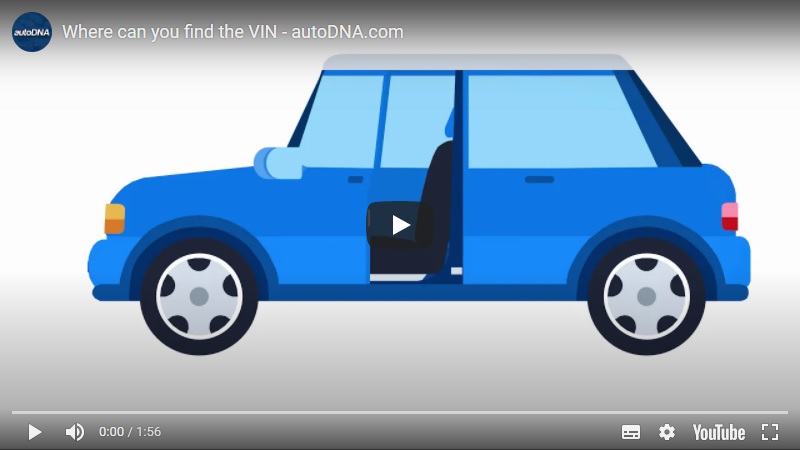
The vehicle identification number written in the registration documents (vehicle registration book, vehicle card) should be the same as the identification number embossed on the individual elements of the vehicle. Before purchasing a vehicle, it’s good to verify that in order to avoid scam.
FAQ
What is VIN number?
VIN number (Vehicle Identification Number) is a unique vehicle number used for identifying vehicles.
What information does the VIN number contain?
VIN number contains all information necessary to identify a particular vehicle, especially information concerning the manufacturer, manufacture year and place, equipment and the bodywork type.
How to check a car by the VIN number?
You can verify a vehicle by the VIN number via services offered by governmental administration institutions or using the database containing billions of records in the autoDNA service.
Is it possible to check a VIN number for free?
There are governmental administration databases in which you can check a VIN number, usually for free. However, their scope might be local, which means that they might not contain the cross-border (international) data. Therefore, we recommend checking a VIN number each time in the international autoDNA database.
What is a “lemon car”?
A “lemon car” is a commonly used term to refer to a car with hidden issues, salvage past or other features which the seller might want to abuse in order to increase the vehicle value.
